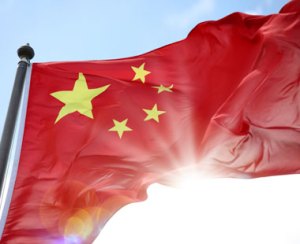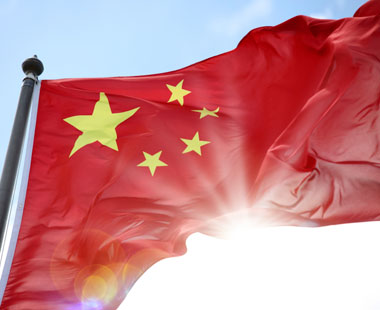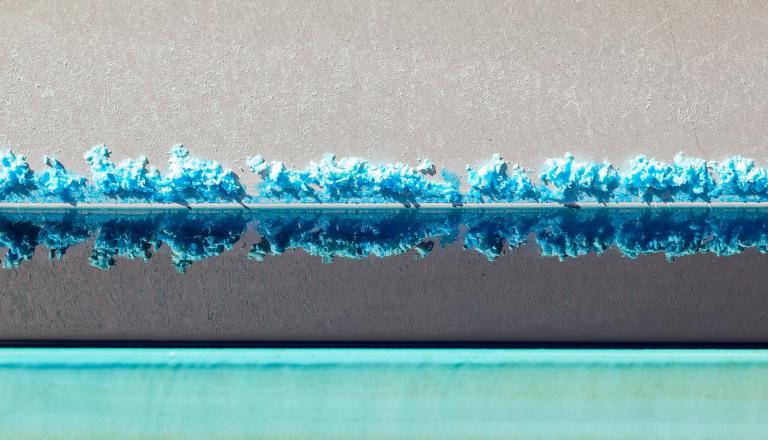
Blame China. Or thank China?
Conservatives are going nuts about a “new Solyndra,” a gullible media is falling for the hype, and the only voice of sanity is … Politico?
Wonders never cease. Good on reporter Alex Guillen for noting that the scandal of $2.1 billion in government money going to a bankrupt solar company (Sun Trust this time) looks a little less like a scandal when you note that the government didn’t actually give the company any money. Not only did Rush Limbaugh and RedState get that wrong — getting thing wrongs is more or less their vocation — but even AP and Reuters left this crucial detail out of their initial stories. Most disturbingly, Guillen notes that Rep. Morgan Griffith (R-Va.), who’s on the Energy and Commerce oversight committee, didn’t seem to know that the company was never actually given money. Guess he’s just another Rush listener.
Anyway, the actual, true story behind the latest solar kerfuffle — related with typical clarity by Todd Woody — is quite interesting. It’s got very little to with the wisdom of Energy Department support for clean energy, but a great deal to do with the big story in solar power today: China.
Here’s what happened. German solar developer Solar Millennium (which specialized in solar thermal technology) bought up leases on a bunch of federal land in the Southwest U.S. in 2007 and 2008. With German industrial firm Ferrostaal, it created a joint venture called Solar Trust, a U.S. company that was going to build solar-thermal plants on that land, using solar troughs.
One of Solar Trust’s projects, the 1,000-MW Blythe Solar Power Project, was going to be the biggest solar power plant ever. For Blythe, Solar Trust got a $2.1 billion loan guarantee offer from DOE.
The loan was premised on the solar troughs, though. Eventually, Solar Trust decided that solar PV panels would be cheaper. In order to switch, it decided to forgo the DOE loan in favor of private funding. (Again: It never took the damn loan.)
Meanwhile, in December, parent company Solar Millennium declared bankruptcy. It sold its U.S. projects to a German PV developer called Solarhybrid, but oops, Solarhybrid declared bankruptcy too. Meanwhile, nobody was funding Solar Trust, and so on Monday, the company filed for bankruptcy itself.
What does it all mean? Well, let’s ask about the crucial chapters of the saga.
Why did Solar Trust switch from solar troughs to PV for the Blythe project? Because Chinese companies are flooding the global market with cheap PV, undercutting other forms of solar technology (like, say, Solyndra’s).
Why did Solar Millennium declare bankruptcy? Because Chinese companies are flooding the global market with cheap PV, undercutting companies that specialize in other forms of solar technology.
Why did Solarhybrid declare bankruptcy? Because Chinese companies are flooding the global market with cheap PV, driving down prices and prompting the German government to dial back on solar subsidies, without which many of its domestic producers cannot survive.
But then again …
Why is solar making such dramatic progress in Germany, Italy, and Spain? Because Chinese companies are flooding the global market with cheap PV.
Why is solar grid parity (the point at which PV is competitive with retail electric prices, without subsidies) approaching so much faster than predicted? Because Chinese companies are flooding the global market with cheap PV.
That’s the story of solar today, for better or worse: cheap Chinese PV. The question is, what should U.S. policymakers do about it? That turns out to be a tough call.
One school of thought says that the U.S. should adopt a mercantilist approach and fight back against what it deems unfair Chinese competition. America should protect and grow its own solar manufacturing industry. Van Jones articulates this kind of populist sentiment quite well:
One way to implement this is with trade tariffs, which is what the Obama administration did last month. Another way is by subsidizing U.S. companies. That’s what they’ve been doing since 2008, but Republicans have demonized this spending to the point that the loan guarantee program is paralyzed and the Sec. 1603 grant program was allowed to lapse last month.
The other school of thought, which might be called, dare I say, neoliberal, says that cheap solar panels are a good thing. If the Chinese government is willing to massively subsidize them, we should welcome it. Solar prices will continue to drop for consumers all over the globe and solar power will spread faster. More clean energy! Putting a tariff on PV imports (or passing “made in America” provisions) just raises the price and slows the spread of solar in the U.S. It’s a net loss for humanity.
The U.S. can still have a whole solar PV installation and service industry. It can still have advanced solar innovation and technology development. Those are things America is good at and well-positioned for. It just can’t do the manufacturing of the panels. The neoliberal perspective is generally that manufacturing is overrated anyway.
To be honest — and so typically liberal — I can see the appeal of both sides of this argument and I’m pretty torn about it. I’m curious to hear from you readers. What do you think the U.S. should do about Chinese solar?



